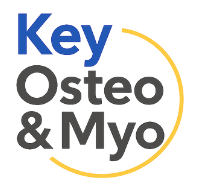Understanding one-sided jaw pain
How the temporomandibular joint works
Common symptoms and when they appear
If you’re dealing with one-sided jaw pain and aren’t sure what’s causing it, our team at Key Osteopaths is here to help. We take the time to understand what your jaw is going through, whether the discomfort is linked to muscle tension, posture, stress, or changes in how your TMJ is moving. With a calm, supportive approach, we help you make sense of your symptoms and guide you toward comfortable, balanced jaw movement again.Anna, Principal Osteopath at Key Osteopaths
Common causes of one-sided jaw pain

Muscular tension and overuse
TMJ dysfunction and joint imbalance
Dental, sinus, and ear-related causes
If you’re unsure whether your jaw discomfort is muscular, joint-based, or linked to sinus or ear irritation, arrange an appointment with Key Osteopaths. Our clinicians provide careful assessment and clear guidance for patients across Chertsey, Dorking, Sheerwater, and nearby communities, supporting effective management and recovery.
How jaw alignment and posture affect pain

Neck and upper back influence on the jaw
How stress and clenching patterns contribute

MEET THE
team
After years of visiting chiropractors, I have decided to try osteopath services. Anna is very skilled and knowledgeable as well as warm and friendly. Each session improved my condition… read more and I always left feeling pain-free. I would highly recommend Anna’s services.
I have been seeing Anna for a few years now after struggling with migraines. She has not only helped me immensely but was the first person I’d seen to get… read more to the root of the problem. Along with being a brilliant therapist, her advice and aftercare is invaluable. I can’t recommend the clinic highly enough
I can not recommend Anna more…..she has totally helped me sort my lower back after a slipped disc. I now see her regularly just to prevent any further issues with… read more my back. She has worked magic! I have recommended her to many friends and family who have equally been really pleased with her.
Osteopathic assessment of jaw pain

What happens during your consultation
What to expect during and after treatment
Self-care and home management strategies

Jaw relaxation and breathing exercises
Posture, sleep, and hydration advice
For personalised guidance on improving posture and managing daily habits that contribute to jaw discomfort, contact Key Osteopaths. Our osteopaths support patients from Guildford, Woking, Cobham, and surrounding areas with tailored treatment and practical advice to encourage balanced jaw function and lasting comfort.
I have been treated by Anna for a few years now to address niggles received from training and love that she not only addresses the immediate problem, but works to… read more help correct some the underlying issues too. Very knowledgeable and professional.
My wife and I – plus my two grown-up daughters – have all seen Anna at one point or another over the last two/three years. She is absolutely fantastic. What… read more you get is what you need – reassurance, matter-of-fact advice and most importantly – pain relief. Anna also gives you some simple stretches and exercises that help mitigate any future problems. Before meeting Anna I had seen a number of other osteos and she is the best by a mile. Highly recommended.
Anna came highly recommended to me by a friend so I decided to go and see her about a muscle issue in my left arm. Anna was fantastic, she asked… read more all the right questions and gave all the right advice, after treatment I had the best arm workout I’d had in over 5 months with no pain in the morning that I usually would have suffered from. I should have gone to see her sooner ! I’m so happy and grateful for the treatment I have received. A big thank you from me and my left arm ! thanks Anna !!
When to seek further medical advice

Recognising red flags and referral pathways
Book an Appointment at Key Osteopaths


